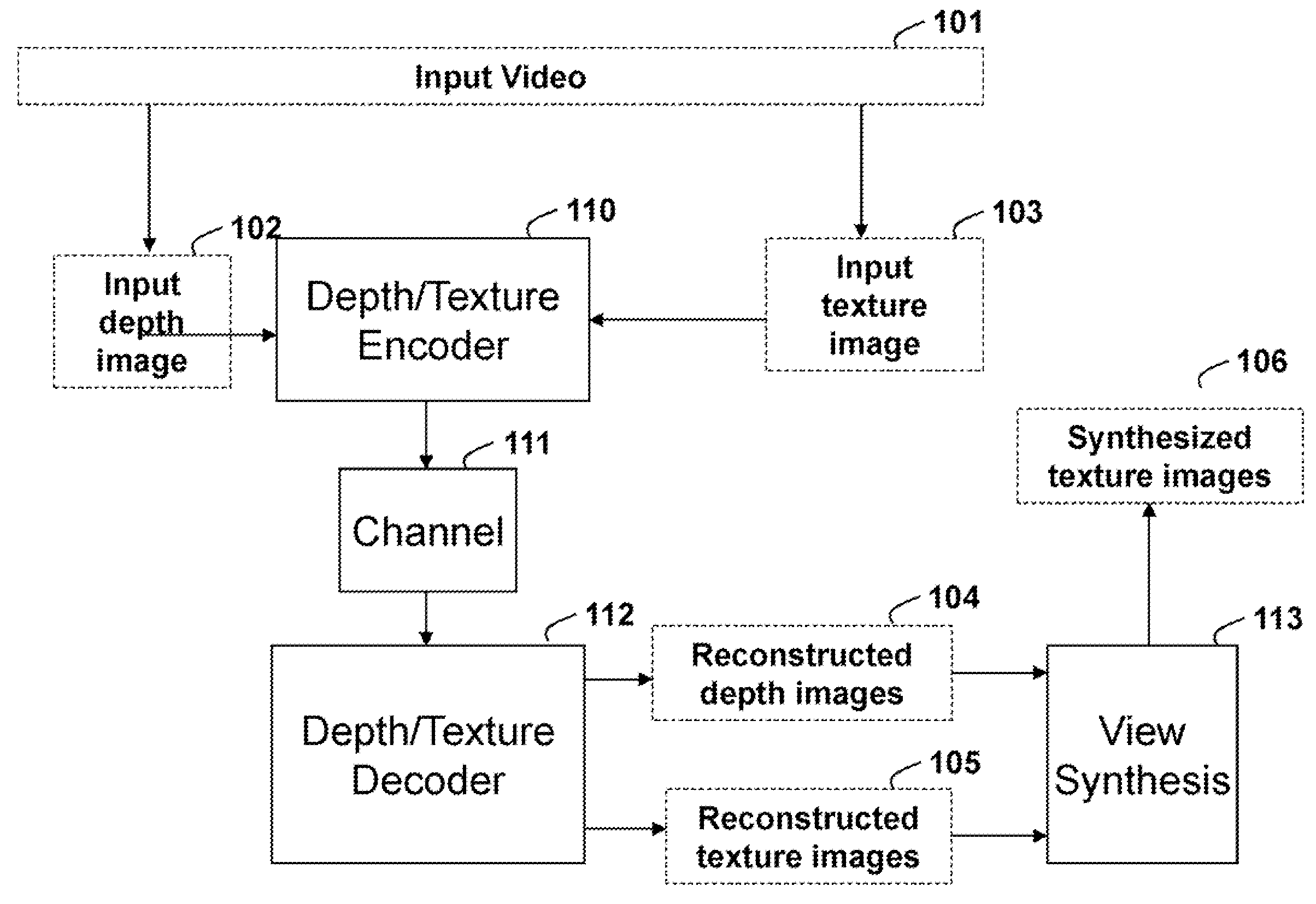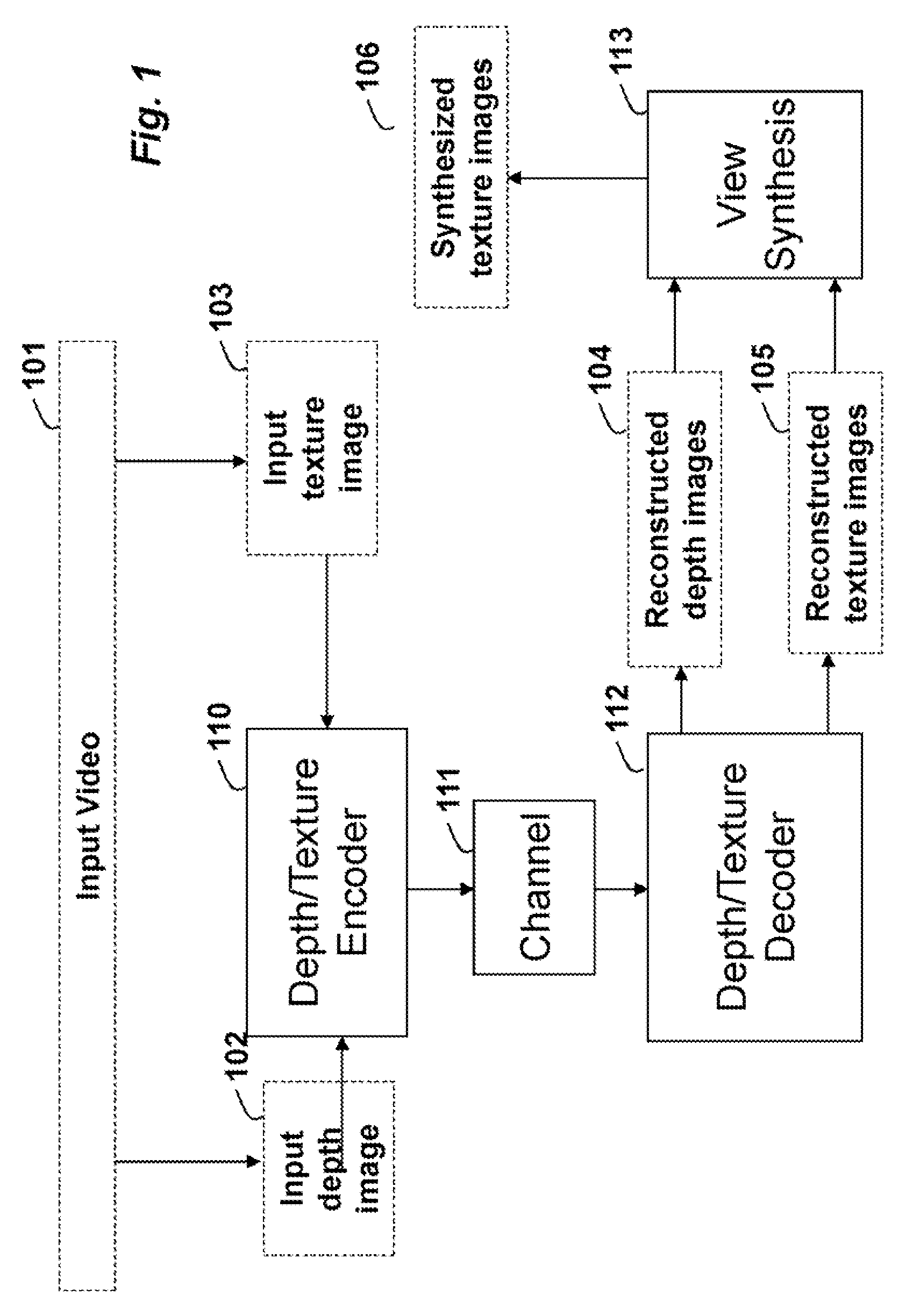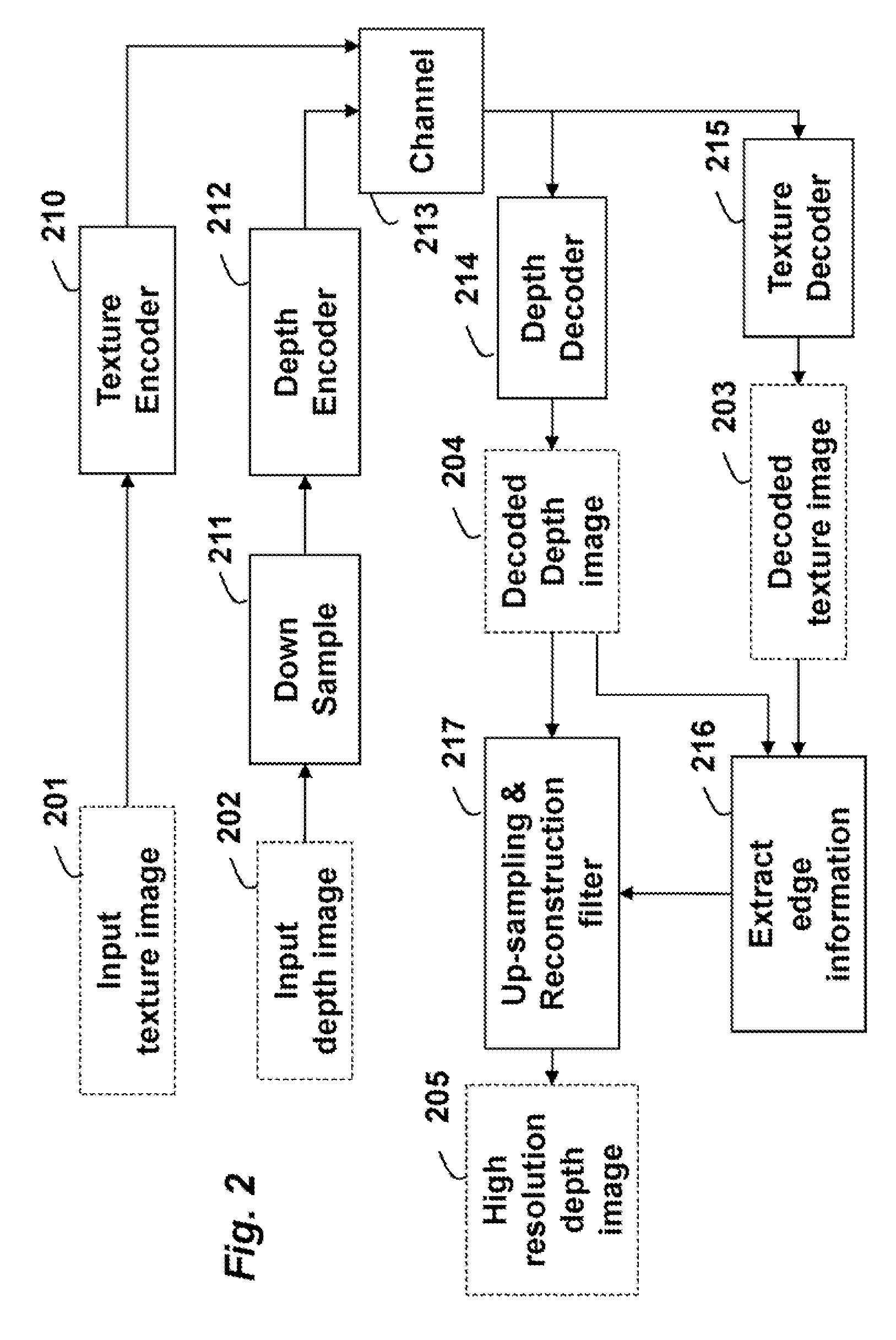Method for Generating High Resolution Depth Images from Low Resolution Depth Images Using Edge Layers
a technology of depth images and edge layers, applied in the field of image processing and compression, can solve the problems of compromising the quality of virtual images, spatial monotony of depth images, and substantial redundancy between texture images and corresponding depth images, and achieve the effect of high resolution
- Summary
- Abstract
- Description
- Claims
- Application Information
AI Technical Summary
Benefits of technology
Problems solved by technology
Method used
Image
Examples
embodiment 1
[0038]For some embodiments, the depth images can have a resolution lower than the resolution of the texture image. One embodiment down-samples the input depth image before encoding to improve encoding efficiency.
[0039]FIG. 2 shows a first embodiment of the invention to use the edge information to assist the depth up-sampling and reconstruction.
[0040]The input includes one or more texture images 201, and corresponding depth images 202. The texture images 201 are encoded 210, passed through a channel 213 and decoded 215.
[0041]Before the depth encoding 212, the high resolution depth image 202 is down-sampled 211 to reduce the resolution of the depth image. The input depth image can already be a low resolution depth image. Nevertheless, the depth image still needs to be up-sampled for view synthesis.
[0042]The low resolution depth image is coded 212 and passes through the channel 213 to a depth decoder 214. Because the decoded depth image 204 has a lower resolution, an up-sampling and re...
embodiment 2
[0045]FIG. 3 shows another embodiment. The edge information is known at the encoder, and transmitted to the decoder explicitly. The edge information 306 for the input depth image 202 can be explicitly encoded 318, transmitted through the channel 213 and decoded 319 to produce decoded edge information 307. The edge information can be used by the up-sampling and reconstruction filter 217 to separate the foreground and background region, when filtering the decoded depth image.
[0046]In both embodiment 1 and 2, the reconstruction process filters after the decoding.
embodiment 3
[0047]FIG. 4A shows an AVC decoder 400 for generating the decoded texture image 203 from the input texture bitstream 401.
[0048]FIG. 4B shows an AVC decoder 400 for generating the decoded depth image 204 from the input depth bitstream 402. The depth decoded depth image can subsequently be used to generate the high resolution depth image 205 with the up-sampling and reconstruction filter 217.
[0049]As shown in FIG. 4B, the reconstruction filter's output is no longer used by the encoder. That is the reconstructed high resolution depth image is outside the prediction loop.
[0050]A modified H.264 / AVC codec includes an encoder and a decoder for multi-view texture and the other for multi-view depth. The depth encoder and decoder use a depth up-sampling reconstruction filter according to embodiments of our invention and described herein.
[0051]Input to the encoder includes the multi-view texture input video and the corresponding sequence of multi-view depth images. Output includes encoded bits...
PUM
 Login to View More
Login to View More Abstract
Description
Claims
Application Information
 Login to View More
Login to View More - R&D
- Intellectual Property
- Life Sciences
- Materials
- Tech Scout
- Unparalleled Data Quality
- Higher Quality Content
- 60% Fewer Hallucinations
Browse by: Latest US Patents, China's latest patents, Technical Efficacy Thesaurus, Application Domain, Technology Topic, Popular Technical Reports.
© 2025 PatSnap. All rights reserved.Legal|Privacy policy|Modern Slavery Act Transparency Statement|Sitemap|About US| Contact US: help@patsnap.com



